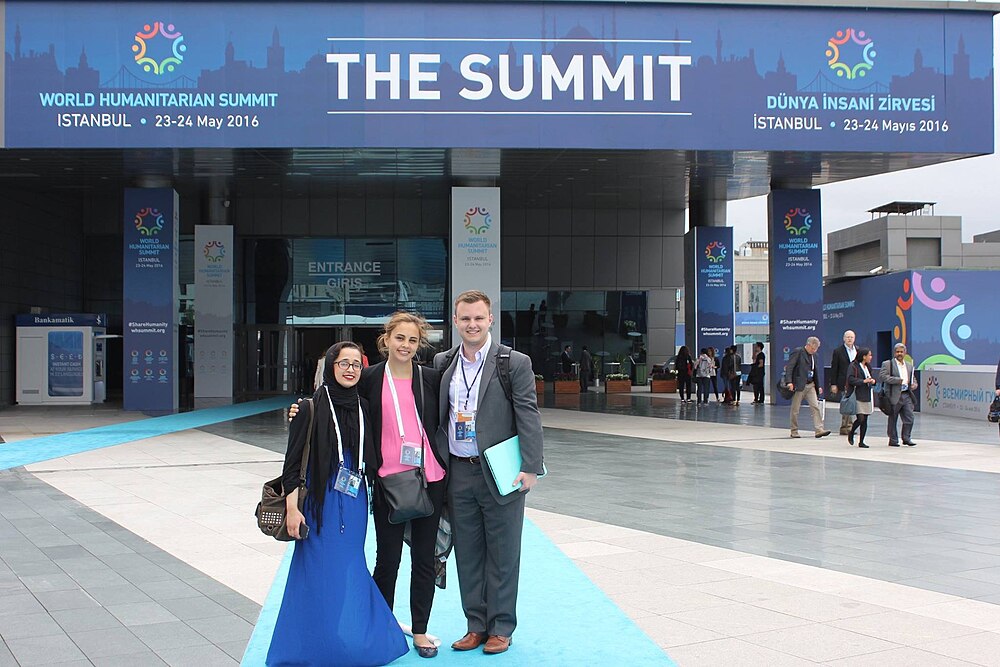| Topic | Stakeholder(s) | Commitment |
|---|
| Transparency | Aid agencies and donors | Publishing transparency, timely, open, and harmonized high quality data on funding, within two years of the summit |
| To make use of data that explains the distinctness of aid agencies, and the contexts in which they work |
| To improve use of digital tools for accountability, decision making, efficiency, and funding traceability |
| To support others with regards to data access and data publishing |
| Localisation | Aid agencies and donors | Provide multi-year funding to local and national aid agencies |
| Remove barriers that block partnerships with local and national aid agencies |
| To support and collaborate with national governments coordination of humanitarian aid |
| To provide 25% of funding to local or national organizations as directly as possible |
| To agree, with the Inter Agency Standing Committee, key performance indicator about localisation efforts |
| To increase the use of funding tools that enable more funding to local and national aid agencies |
| Use of cash | Aid agencies and donors | To increase the use of cash, vouchers and in-kind in humanitarian aid. |
| To fund new aid delivery models that can increase the scale of aid |
| To assess the cost and benefits of cash (including for protection) compared to in-kind aid. |
| To agree standards and share information about cash programming to better understand the costs and benefits |
| To monitor and evaluate cash programming in a coordinated way |
| To do more cash programming, where appropriate |
| Cost efficiency | Aid agencies and donors | To increase efficiencies of delivery aid with a focus on technology and innovation |
| Harmonize partnership agreements and share information about the needs of people affected by crises |
| Aid agencies | To provide transparent and comparable cost structures |
| To maximize efficiency with regards to procurement of goods and services |
| Donors | To reduce individual donors monitoring and evaluations and to make joined assessments |
| Needs assessment | Aid agencies and donors | To collaborate on one centralised needs assessment for each individual humanitarian emergency |
| To coordinate data collection with a view to reduce intrusion for people affected by crises |
| To quickly share needs assessment data, while being mindful of privacy and protection needs |
| To fund expert third-party support for data collection to improve collaboration |
| To prioritize activities based on evidence. |
| To fund independent evaluation of needs assessments |
| To undertake risk and vulnerability assessments in collaboration with local authorities and international development agencies |
| Participation and inclusion | Aid agencies and donors | Improve national leadership and governance capacity |
| Create common standards for community participation and engagement |
| Improve dialogue with local stakeholders |
| Create systems to ensure that feedback from local stakeholders is acted upon |
| Donors | To be flexible with funding to allow adaptions to local community feedback |
| To fund and invest time in participation and inclusion |
| Aid agencies | To ensure that monitoring and evaluation plans include community feedback by 2017 |
| Multi-year funding | Aid agencies and donors | To increase funding agreements to cover multiple years, to document efficiency and effectiveness, and to pass on multi-year funding agreements to implementing sub-contractors. |
| To provide multi year funding and associated monitoring and evaluation to at least five national response plans by 2017 |
| To improve coordination and collaboration on sharing needs assessments between humanitarian aid and international development stakeholders. |
| Reducing the earmarking of funds by nation | Aid agencies and donors | To collectively annually agree the most effective mechanism to report on unearmarked or "softly earmarked" funds by 2017 |
| To increase flexibility of funding, to reduce earmarking funding to certain nations |
| Aid agencies | To transparently and regularly share information on how unearmarked funds are spent. |
| To publicly acknowledge donors who provide flexible funds |
| Donors | To reduce national earmarked funds |
| Reporting | Aid agencies and donors | To harmonize and simplify donor reporting by the end of 2018 |
| To increase use of digital technology in donor reporting |
| To improve the efficiency and quality of reporting |
| Coordination | Aid agencies and donors | To increase efforts to prevent humanitarian needs |
| To invest in sustainable solutions for people who are forcibly displaced and those returning |
| To bolster local systems and to improve local social protection |
| To undertake collaborative vulnerability and risk analysis with international development agencies |
| To engage better with multilateral development banks. |






